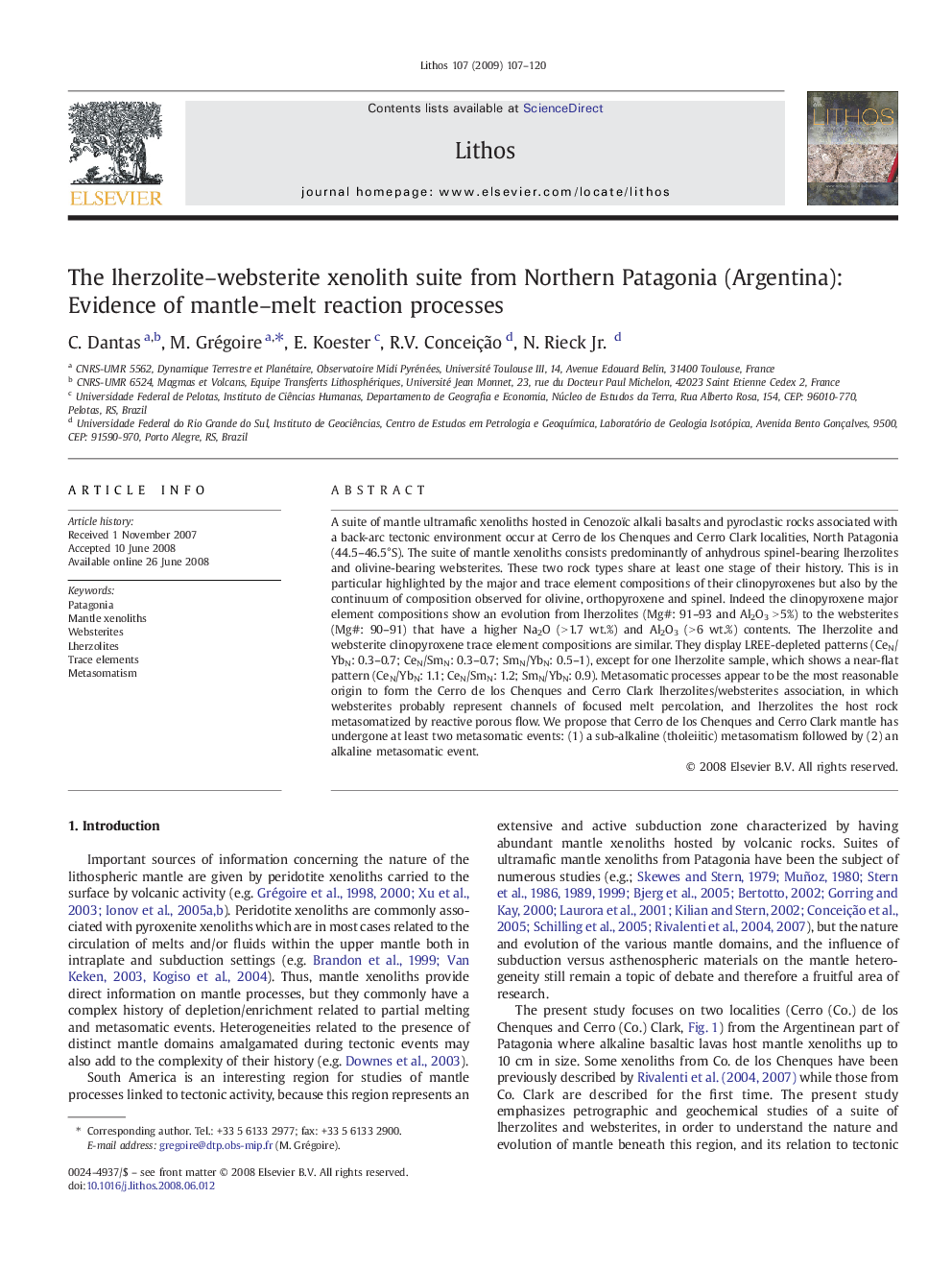| Article ID | Journal | Published Year | Pages | File Type |
|---|---|---|---|---|
| 4717482 | Lithos | 2009 | 14 Pages |
A suite of mantle ultramafic xenoliths hosted in Cenozoïc alkali basalts and pyroclastic rocks associated with a back-arc tectonic environment occur at Cerro de los Chenques and Cerro Clark localities, North Patagonia (44.5–46.5°S). The suite of mantle xenoliths consists predominantly of anhydrous spinel-bearing lherzolites and olivine-bearing websterites. These two rock types share at least one stage of their history. This is in particular highlighted by the major and trace element compositions of their clinopyroxenes but also by the continuum of composition observed for olivine, orthopyroxene and spinel. Indeed the clinopyroxene major element compositions show an evolution from lherzolites (Mg#: 91–93 and Al2O3 > 5%) to the websterites (Mg#: 90–91) that have a higher Na2O (> 1.7 wt.%) and Al2O3 (> 6 wt.%) contents. The lherzolite and websterite clinopyroxene trace element compositions are similar. They display LREE-depleted patterns (CeN/YbN: 0.3–0.7; CeN/SmN: 0.3–0.7; SmN/YbN: 0.5–1), except for one lherzolite sample, which shows a near-flat pattern (CeN/YbN: 1.1; CeN/SmN: 1.2; SmN/YbN: 0.9). Metasomatic processes appear to be the most reasonable origin to form the Cerro de los Chenques and Cerro Clark lherzolites/websterites association, in which websterites probably represent channels of focused melt percolation, and lherzolites the host rock metasomatized by reactive porous flow. We propose that Cerro de los Chenques and Cerro Clark mantle has undergone at least two metasomatic events: (1) a sub-alkaline (tholeiitic) metasomatism followed by (2) an alkaline metasomatic event.
